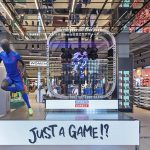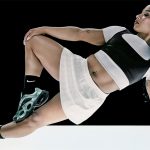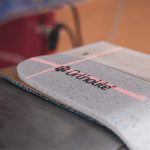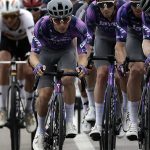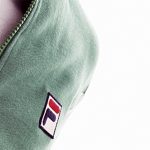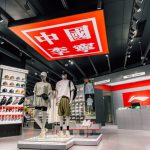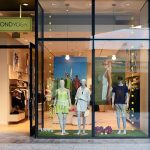Retailers flying high following a record March for same-store sales were brought crashing back to reality during April, as a calendar shift and cooler, damp weather caused more than 70% of retailers to miss estimates for the month. While most analysts had predicted an earlier Easter and the arrival of clement spring weather in March would tap into April sales, conservative forecasts were missed nearly across the board, a sobering reminder to retailers that optimism should be kept in check as vestiges of the recession continue to linger in the marketplace.
Besides the calendar shift, clammy weather and an equally dampened buying mood contributed to disappointing results, although consolidated comps still crept up 0.8% against easy year-ago comparisons that came during the nadir of the recession., according to data compiled by the International Council of Shopping Centers, which tracks 31 retail chains, excluding Wal-Mart. April growth, although minimal, represented the 8th consecutive month of improving retail comps after a full year of declines during the midst of the recession.
Likewise, April retail results came shortly after a report indicating that the U.S. economy grew at a rate of 3.2% during the first quarter of fiscal 2010 representing the fastest pace in more than three years.
Despite disappointing April results, however, analysts and industry veterans note that large-scale inventory management and a lower rate of discounting among retailers propelled the industry to growth for the March/April period, signifying a promising outlook for the remainder of fiscal 2010. The ICSC reported that the March/April period was “very strong and encouraging,” with 4.9% comp growth, far above the 3.4% pace for the December through February period. ICSC estimated that the Easter shift boosted March comps by 4 to 5 percentage points and “was a drag on overall industry sales by the same magnitude in April.”
With that in mind, the ICSC attributed the “outsized” two-month gain to a confluence of factors in addition to those aforementioned, including increased “catch-up demand,” and some consumers elevating their purchases with higher margin/ price-point merchandise.
The dawdling return of the moneyed consumer was evidenced within the Luxury Department Store sub-segment, which recorded its fifth consecutive month of same-store growth albeit at a significantly slower pace than the previous month. Leading the way for the Luxury sub-segment was Nordstrom (+7.5%) and Neiman-Marcus (+10.9%), both of which exceeded expectations for the month. At Macy’s (+1.1%), management said “fresh new inventory, including private and exclusive brands” drove results above forecasts during March. As a result, management upped earnings guidance for the first quarter from 2 cents per share to 4 cents per share. Saks (+3.2%) missed forecasts as it cut back on promotions by lowering the discount percent on its four-day Friends & Family event and reduced its Triple Points event from four days last year to one day this year.
Sales at remaining department stores weren’t so rosy. At Kohl’s, same-store sales swung to a 7.7% decline after impressive low-twenties comp growth in March. Company President and CEO Ken Mansell said the Easter shift and the timing of grand opening events had compounded declines for April, and added that consolidated same-store sales for the March/April period were up 8.8% on strength from the Southeast and West regions. Subsequently, Mansell confirmed Kohl’s was upping guidance for Q1 to EPS of 61 cents to 62 cents versus previous guidance of 55 cents to 57 cents. JC Penney (-3.3%) also upped earnings forecasts despite slipping comps. Management now expects earnings for the first quarter to be 25 cents per share as compared to earlier estimates of between 20 cents and 24 cents per share.
At Stage Stores (-8.3%), March/April sales inched up 0.8% on strength from accessories, footwear, junior’s, petites and young men, among others. Management upped diluted EPS guidance from 2 cents per share to a range between 4 cents and 5 cents per share. Dillard’s (-5.0%) missed analysts’ forecasts, but management said comps for the March/April period were up 2%.
For the Teen segment, an earlier Spring Break cut into sales at malls, dropping consolidated comps 6.6%, a drastic swing from double-digit growth in March and the first segment decline in three months. Wet Seal (-6.1%), Gap (-3.0%), American Eagle (-6.0%), Abercrombie & Fitch (-7.0%), Hot Topic (-12.0%) and Zumiez (+2.1%) all missed estimates for the quarter as many students finished their spring shopping and returned to school during March this year. At often venerated Abercrombie, the Hollister brand (-7.0%) continues to be consistently bad while the namesake stores (-7.0%) aren’t performing any better. Gap badly missed estimates for the month on weakness from its namesake stores (-6.0%) and its usually-consistent Banana Republic brand (-2.0%). At alternative retailer Hot Topic, management narrowed Q1 guidance to a loss of 3 cents to 4 cents per share versus a previous estimated net loss of between 2 cents and 5 cents per share.
The story within the Discount segment was Target (-5.9%), which completely whiffed on estimates despite “particularly strong” results from the high-end discounter’s higher margin categories. Management said comps were “somewhat below our expectations,” but added that growth of 3.0% for the March/April period was stronger than any monthly performance since April of 2008. The TJX Cos. (+4.0%) narrowly missed expectations on cool, wet weather – particularly in New England – that hampered apparel sales. Management said customer transactions increased for the month. Ross (+3.0%) also missed expectations, as CEO Michael Balmuth said the company has “misjudged the impact” of the Easter shift, which was compounded by cool, damp weather in California, the retailer’s largest market.
For Warehouse Clubs, BJs Wholesale (+4.6%) and Costco (+11.0%) fell short of expectations, with management at Costco estimating the impact of the calendar shift as about 2% to 3%.
In related news, a recent report by the Labor Dept. indicated that the unemployment rate increased from 9.7% to 9.9% in April despite the addition of 290,000 jobs. April represented the fastest growth rate for U.S. employment in four years.
Zumiez Inc. reported comps for the four-week period ended May 1 increased 2.1% on net sales that increased 7.8% to approximately $25.7 million from $23.8 million. On a pre-recorded call, company CFO Trevor Lang said dollars per transaction were down slightly due to a decrease in average unit retail, which was mostly offset by an increase in units per transaction.
April 2010 weekly comps were negative 13.2%; positive 12.1%; positive 6.8%; and positive 7% for weeks one through four, respectively. Stores in the West region of the United States comped up about 3% while stores in the Midwest were approximately flat. Lang said stores in the South comped down about 3% and stores in the Northeast comped down about 5%.
On a quarter-to-date basis, Zumiez saw a positive 9.1% surge in comps as compared to a negative 15.3% during the comp period in 2009.
The Buckle reported April comps decreased 5.7% on net sales that increased 1.1% to $58.4 million for the four-week fiscal month from $59.1 million in the year-ago month.
Men’s sales, which represented 38.5% of total sales, were down about 3.5% despite strength from denim, active apparel and footwear, similar to strong categories on the women’s side.
Revenues from the women’s side, which represented 61.5% of total sales, were up slightly during the month.
Price points on the men’s side were up slightly, while women’s experienced a 7.5% gain.
More specifically, combined footwear categories for men and women showed a 9% increase from the year-ago period while combined accessories fell 12.5%. These two categories accounted for approximately 6.5% and 5.5%, respectively of April’s sales.
Reebok Brand Sales driven by Toning and ZigTech…
“The explosion of growth in this space in such a short period of time eclipses nearly everything I have witnessed in the industry over the last 25 years. And we are well on track to selling at least 5 million pairs of toning footwear in the U.S. alone this year,” said Hainer.
Internationally, Reebok is gaining traction following recent advertising campaign launches in Germany, Russia, and the UK, as well as a TV campaign. An EasyTone campaign featured supermodel Helena Christensen nude except for a pair of shoes has been generating considerable buzz.
Reebok is also seeing success with its ZigTech training collection, which launched on March 11 in the U.S. with an aggressive marketing campaign. With sell-through rates strong so far, ZigTech will “easily sell” over 1 million pairs in the U.S. in 2010.
“It is with confidence that I can say today that Reebok will grow at a double digit rate in North America this year,” said Hainer. “Also, I believe we could now sell up to 10 million pairs of Toning footwear globally this year.”
Regarding Classics, Hainer said Reebok has “lost some sales” since much of the product has become similar to its Performance products. “We are reshaping our Classics category, because we do not believe that the old formula, with the black and white Classics, will attract the consumer enough anymore. They will still play a role, but we definitely have to reshape the category,” said Hainer.
TM-aG, Rockport and Reebok/CCM Hockey…
TaylorMade increased sales by 14.9% to €223 million ($310 mm) and grew 15.9% on currency-neutral basis.
Hainer said TaylorMade-Adidas Golf's growth was driven by strong double-digit increases in metal, woods, footwear, and irons. In golf balls, Hainer said TaylorMade is “really starting to challenge at the premium end of the market, with growth of over 50% in the first quarter, and the doubling of market share to just under 10%.”
“Although the golf market at retail is off to a weak start, with most major markets around the world contracting at a high single digit rate, I am confident we will again achieve important market share wins in several categories this year as we continue to dominate the premium end of the sport, and cement our position as the largest golf company in the world,” said Hainer.
Sales at Rockport were down 6.9% to €56 million ($77.8 million) and declined 5.2% on currency-neutral basis.
Sales at Reebok CCM Hockey fell 14.4% to €21 million ($29.2 million) and slumped 16.9% on a currency-neutral basis due to lower licensed apparel and hard goods sales.
Looking Ahead…
Gross margin is now forecast to increase to a level between 46.5% and 47.5% of sales versus 45.4% in 2009 and a forecast range of 46.0% to 47.0% of sales previously. Margins are expected to benefit from lower sourcing costs as a result of reduced material costs and lower capacity utilization among suppliers. Other benefits include higher share of sales from the Retail segment, lower clearance sales, as well as the appreciation of the Russian ruble.

